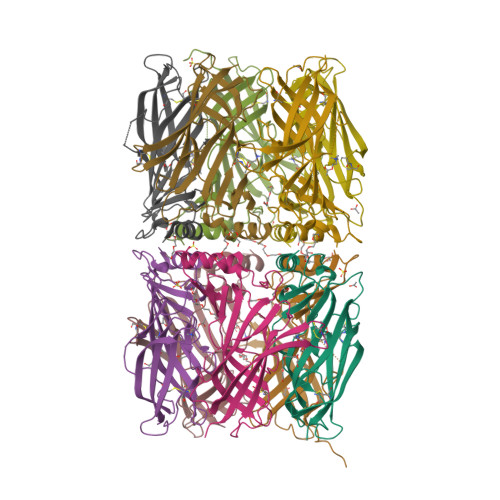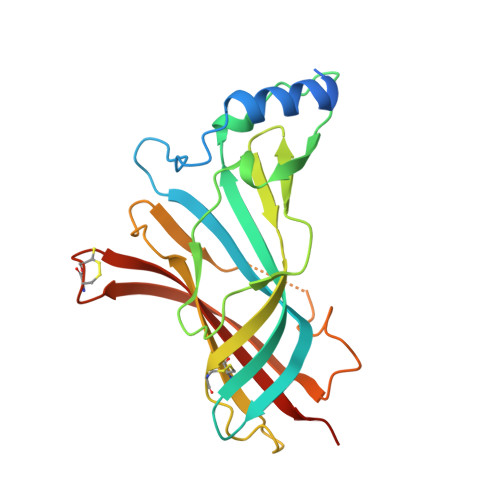Molecular recognition of the neurotransmitter acetylcholine by an acetylcholine binding protein reveals determinants of binding to nicotinic acetylcholine receptors
Olsen, J.A., Balle, T., Gajhede, M., Ahring, P.K., Kastrup, J.S.(2014) PLoS One 9: e91232-e91232
- PubMed: 24637639
- DOI: https://doi.org/10.1371/journal.pone.0091232
- Primary Citation of Related Structures:
3WIP - PubMed Abstract:
Despite extensive studies on nicotinic acetylcholine receptors (nAChRs) and homologues, details of acetylcholine binding are not completely resolved. Here, we report the crystal structure of acetylcholine bound to the receptor homologue acetylcholine binding protein from Lymnaea stagnalis. This is the first structure of acetylcholine in a binding pocket containing all five aromatic residues conserved in all mammalian nAChRs. The ligand-protein interactions are characterized by contacts to the aromatic box formed primarily by residues on the principal side of the intersubunit binding interface (residues Tyr89, Trp143 and Tyr185). Besides these interactions on the principal side, we observe a cation-π interaction between acetylcholine and Trp53 on the complementary side and a water-mediated hydrogen bond from acetylcholine to backbone atoms of Leu102 and Met114, both of importance for anchoring acetylcholine to the complementary side. To further study the role of Trp53, we mutated the corresponding tryptophan in the two different acetylcholine-binding interfaces of the widespread α4β2 nAChR, i.e. the interfaces α4(+)β2(-) and α4(+)α4(-). Mutation to alanine (W82A on the β2 subunit or W88A on the α4 subunit) significantly altered the response to acetylcholine measured by oocyte voltage-clamp electrophysiology in both interfaces. This shows that the conserved tryptophan residue is important for the effects of ACh at α4β2 nAChRs, as also indicated by the crystal structure. The results add important details to the understanding of how this neurotransmitter exerts its action and improves the foundation for rational drug design targeting these receptors.
Organizational Affiliation:
Department of Drug Design and Pharmacology, Faculty of Health and Medical Sciences, University of Copenhagen, Copenhagen, Denmark; NeuroSearch A/S, Ballerup, Denmark.
























